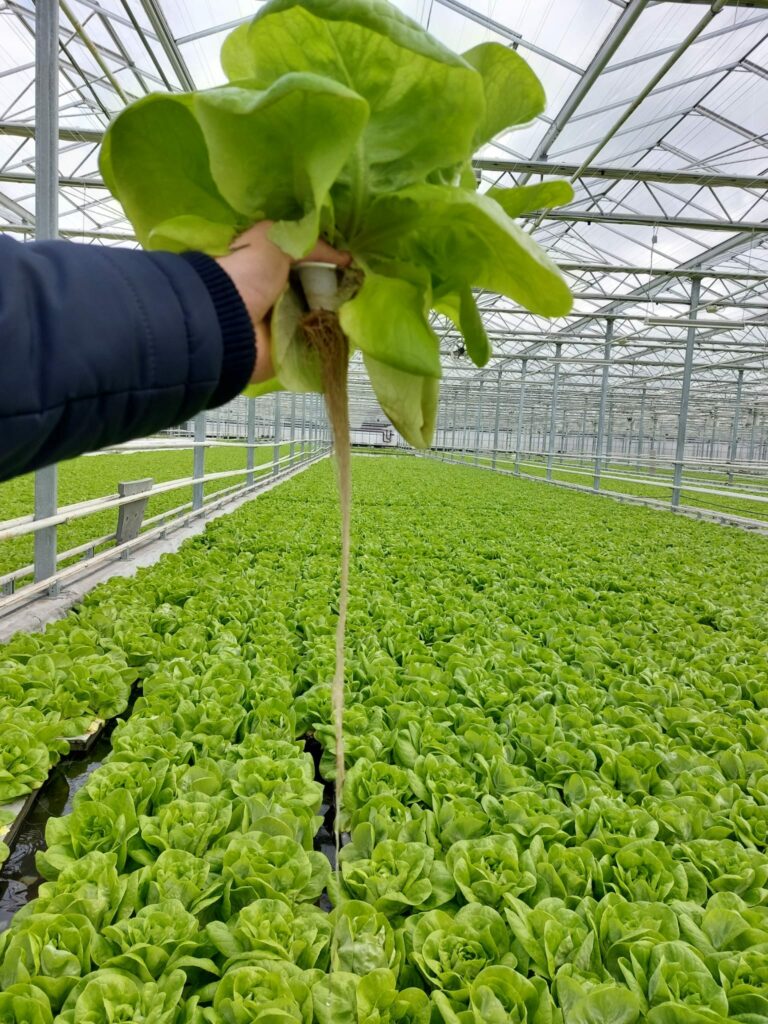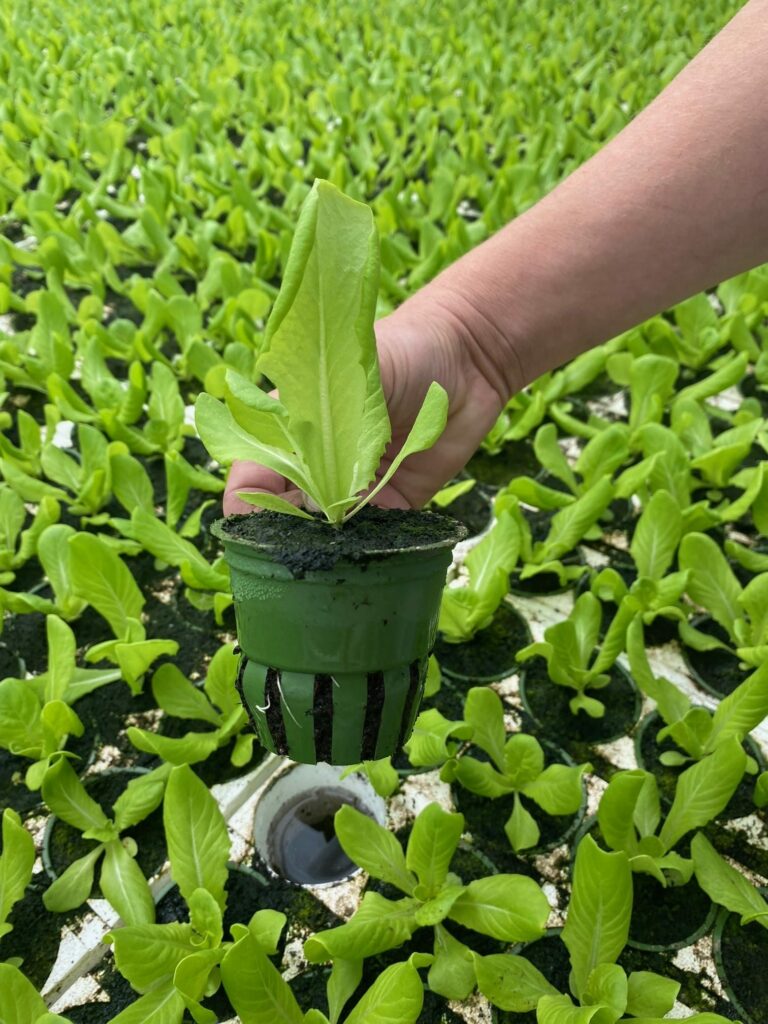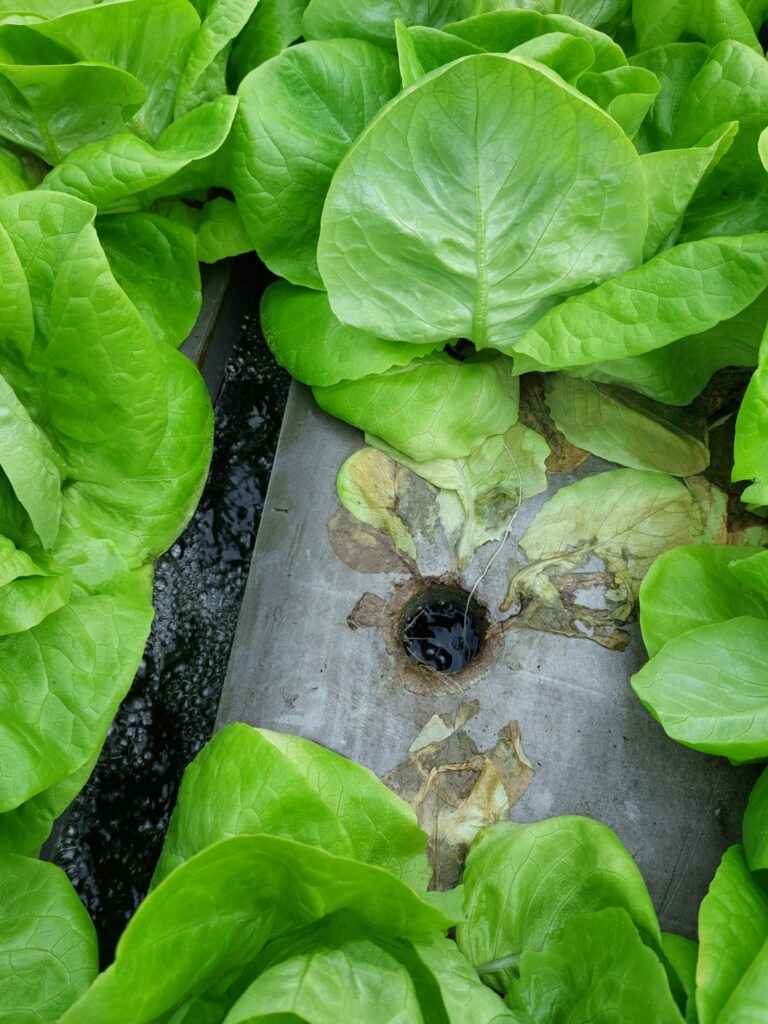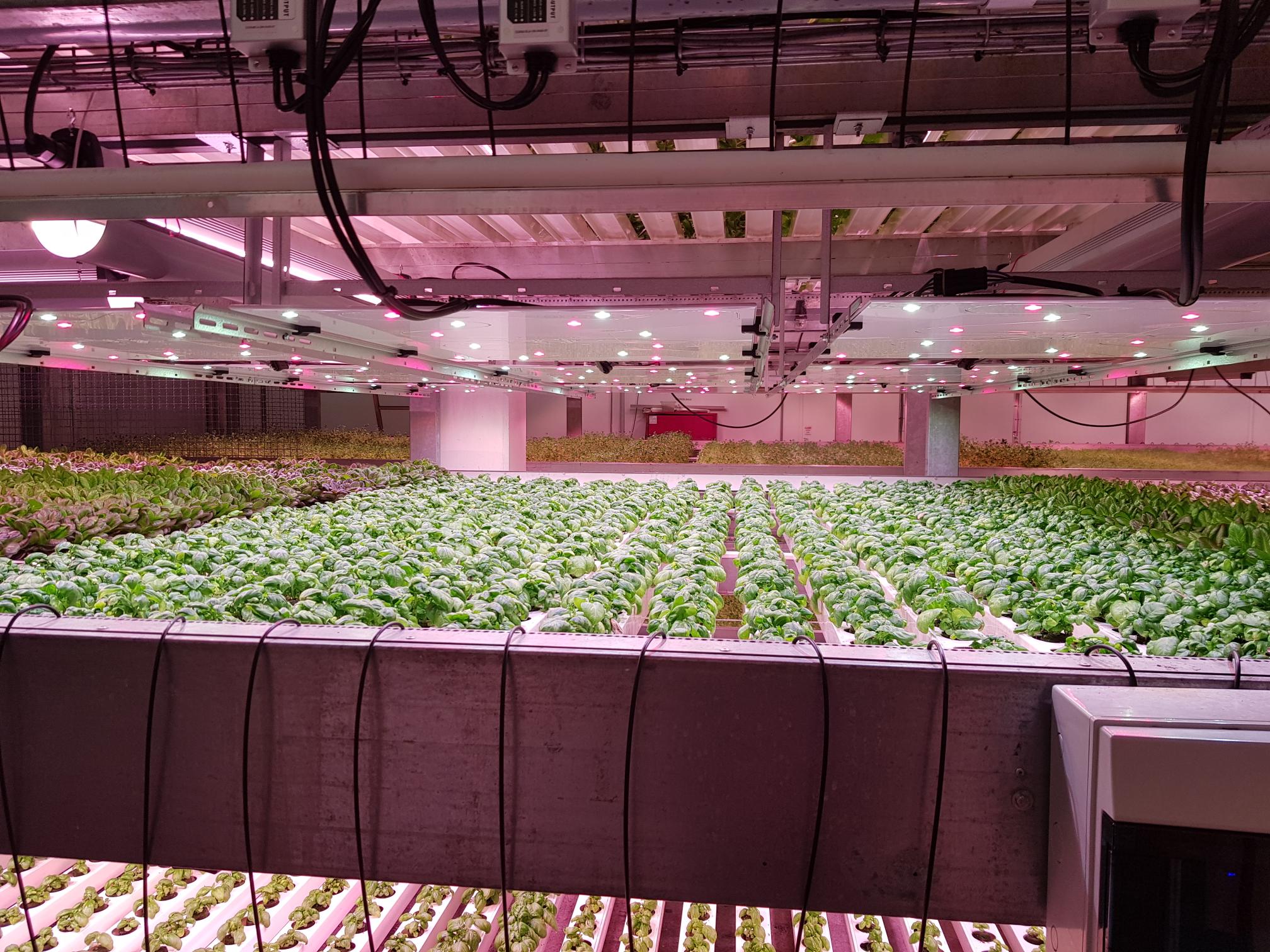In last week’s article, we focused on irrigation strategies for NFT hydroponic systems, the most common cultivation system for mid- to high-tech leafy greens cultivation. This week, we shift focus to Deep Water Culture (DWC) systems, another widely used method where leafy greens are grown in water ponds, typically with an average depth of 16-20 cm. This allows plant roots to remain in constant contact with the nutrient- and oxygen-rich solution.
Limited Data and Industry Knowledge
Similar to NFT systems, DWC remains relatively underexplored in commercial horticulture. Leafy greens are a relatively young market segment, gaining rapid momentum in the last decade. As a result, reliable data, operational benchmarks, and specialized consulting remain limited.
DWC System Types
DWC systems can be broadly classified into two categories:
- Direct Water Contact: The plant plug or substrate remains in constant contact with the pond water (e.g., Meteor Systems).
- Air Pocket System: In this system, the plant is suspended above the water with an air gap (e.g., Dry Hydroponics), requiring additional top irrigation during early plant stages.
In direct contact systems, plants are constantly hydrated, limiting the grower’s ability to influence moisture levels. In contrast, air-pocket systems give growers more control through top irrigation, though this requires greater attention to detail, particularly under fluctuating or strong climatic conditions.

Key Grower Questions in DWC
Among others, these are the most common questions related to irrigation practices that growers ask:
- When and how frequently should top irrigation be applied?
- What is the optimal substrate moisture level during different growth phases?
- How frequently should pond water be circulated?
Direct Water Contact system:
With constant exposure to nutrient water, the substrate remains fully saturated throughout the growing cycle. While this reduces decision-making, it can result in certain challenges, especially regarding product quality and shelf life, mainly due to the high humidity levels surrounding the plant.
Air Pocket Systems:
Top irrigation is crucial during the propagation phase to ensure the substrate stays sufficiently moist and supports the development of a strong main root system. This helps prevent excessive side root development, which can slow growth and reduce efficiency. As the crop matures, irrigation frequency should decrease, and overhead irrigation should completely stop around the third week to prevent disease risks, improve product quality, and shelf life.
Top Irrigation Guidelines
- Young Plant Stage: Use overhead sprinklers during the first 2-3 weeks, primarily in air-pocket systems, to support root establishment and generate a healthy microclimate around the plants.
- Mature Plant Stage: Avoid overhead irrigation to reduce the risk of disease and leaf damage. If increased humidity is required, it is better managed through greenhouse fogging systems rather than top irrigation.
Over-saturation, especially in head lettuce cultivation, often results in tip burn, poor shelf life, and fragile leaves that crack during harvest and packing. Constant wetness increases water weight but compromises product quality.
Substrate Moisture Management
- Direct Contact Systems: The substrate remains fully wet throughout the cultivation, growers should focus on mitigating issues such as algae formation on the substrate surface by increasing airflow/ energy input close to the plant canopy in order to avoid very low humidity deficit levels.
- Air Pocket Systems:
- High Radiation Periods (Summer): Frequent top irrigation is required to prevent water stress, particularly during the early stages.
- Low Radiation Periods (Winter): Reduce irrigation frequency to avoid excessive moisture, root disease, and algae buildup. Substrates should never be allowed to dry out completely, especially during early plant stages, as this develops water stress levels and decreases growing speed.
- From Week 3 Onwards: As plants mature, minimize top irrigation, allowing leaves to naturally cover the substrate, reducing algae development and disease risks below the leafy canopy.

Pond Water Circulation
Water circulation strategies vary depending on farm-specific factors such as pond volume and pump capacity. A general rule is to circulate water more frequently during periods of high radiation and temperature to ensure:
- Uniform nutrient distribution
- Higher oxygen levels in the water
- Reduced duckweed and algae development
- Balanced temperatures within the pond
Optimizing circulation minimizes energy costs while maintaining good crop performance. Over-circulation can lead to unnecessary operational expenses, while under-circulation risks irrigation water uniformity and quality.
Raft Hole Design: A Small Detail with Big Impact
Traditional rafts featured simple circular plug holes, which restricted air flow and encouraged root circling. Modern designs incorporate air channels (e.g., ‘X’ shapes) around the plug to promote oxygenation, healthier roots, and more uniform growth, particularly important in direct contact DWC systems. Choosing the correct raft design plays a crucial role in preventing root-uniformity issues which then translate into a healthier crop.

Weight vs. Quality Considerations
Continuous water contact increases plant weight due to water-saturated leaves. While this boosts total yield by weight, it negatively impacts product durability and market quality. Leafy greens grown with a dry substrate coming from an air pocket WDC system often show:
- Firmer leaf texture
- Reduced tip burn incidence
- Longer post-harvest shelf life
- Lower susceptibility to mechanical damage during packing or processing
Summary: Balancing Simplicity and Quality
For new growers, direct-contact DWC systems offer a simpler, low-maintenance approach with fewer irrigation decisions. However, the trade-off is lower control over plant quality.
Air-pocket DWC systems require more advanced irrigation management but reward experienced growers with improved product quality and better market value.
In conclusion, DWC systems are efficient and productive but require careful attention to system design, irrigation strategy, and raft selection to ensure both yield and quality objectives are met.
Do you have more questions about optimizing your current irrigation strategies?
Feel free to get in touch at denis.laci@agranom.nl.
At Agranom, we are “Your Leafy Greens Specialist”, here to support you with practical solutions and expert advice.



